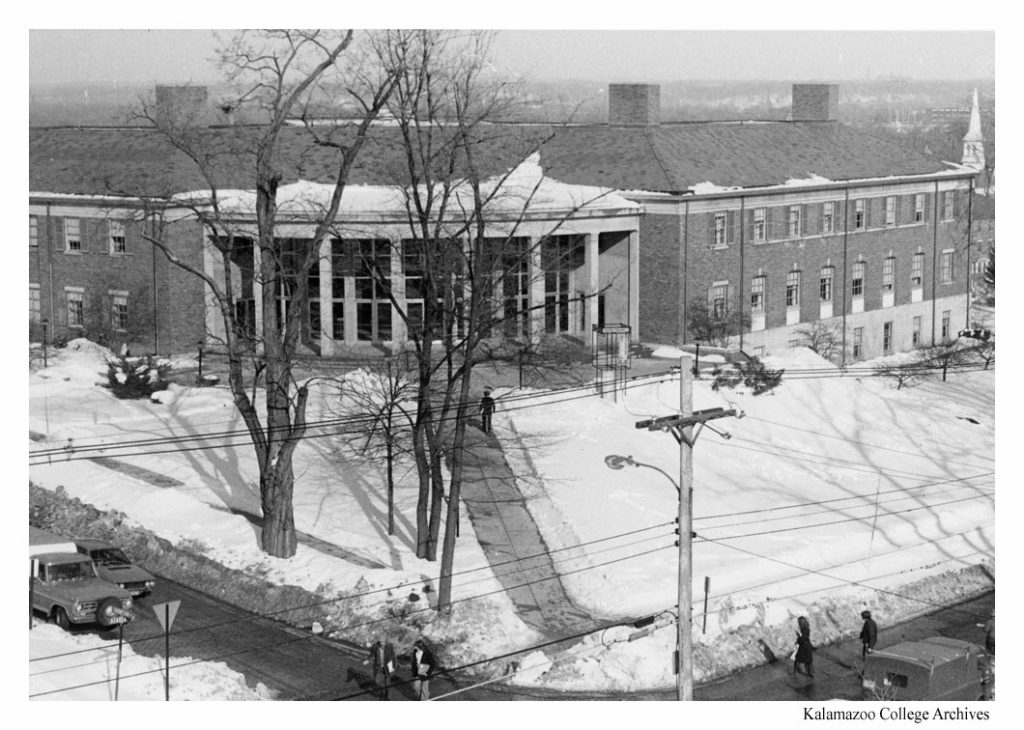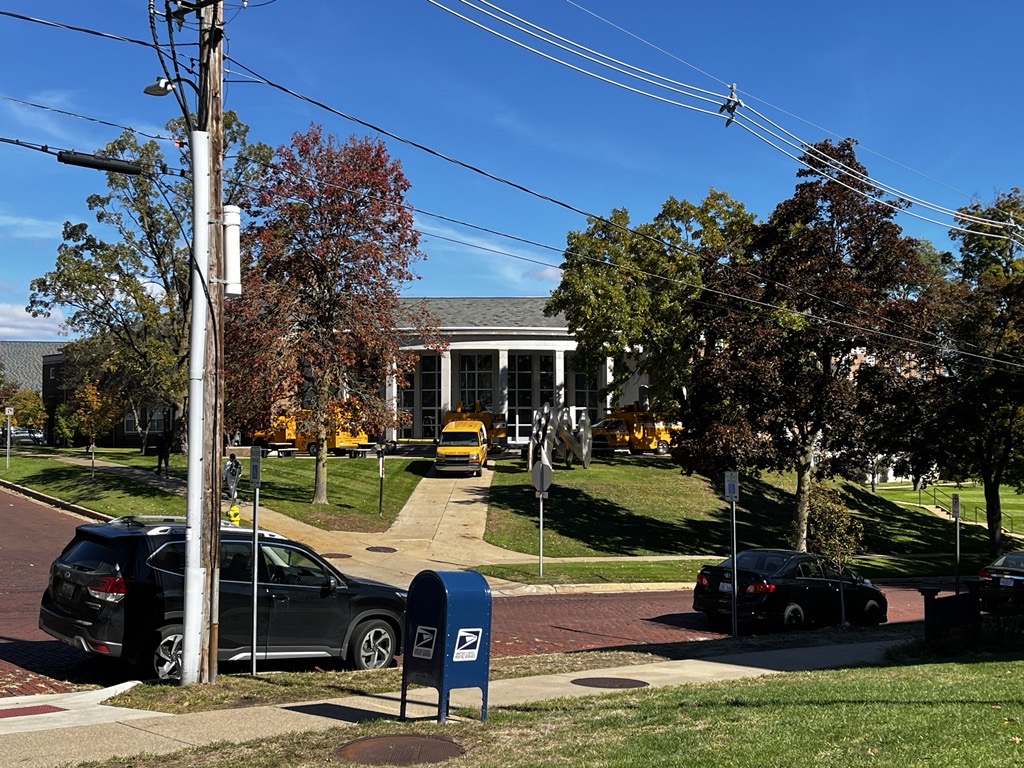By Aliah L. Mohmand And Jack Clancy

Since the beginning of the fall term, the closure of the Fine Arts Building (FAB) has left many students and faculty members troubled. In a campus-wide email sent out on September 13, the FAB’s closure was attributed to the discovery of Cladosporium, a “common mold.” However, the FAB’s mold issue was not unexpected. According to Professor Koehler, an associate music professor at Kalamazoo College, problems with increased humidity levels and mildew in the FAB had been apparent for many months. In response to increased moisture levels during the summer, campus maintenance installed dehumidifiers around the FAB. Yet the dehumidifiers were not enough to limit the spread of mildew. It turned out that the mildew had developed into mold, which was found through most of the FAB, especially in the basement. What once appeared to be an issue that could be easily resolved now needed a serious solution. Mold, which can trigger allergies and cause respiratory issues, required the work of an outside cleaning firm to remove it. As a consequence, the entire FAB was closed off to all faculty members and students.
The closure of the FAB burdened the college’s music, theater, and fine arts departments. The FAB, which was constructed in 1964, is considered to be one of the college’s most specialized buildings. Notably, the FAB is home to the campus’s only recital hall and to the 400-person capacity Dalton Theater, which, at the time of its construction, was regarded by the college’s professors one of the finest stages in the state. Professor Koehler further explained how the FAB contains practice and ensemble rooms, a keyboard lab, and many one-of-a-kind instruments—such as a harpsichord—that can only be accessed in the FAB. In addition to the music department’s equipment in the FAB, it is also home to multiple art studios; for instance, the photography studio and the darkroom used for developing film photographs.
Faculty members were forced to relocate their offices to different buildings. Students participating in music courses were particularly impacted since they no longer had access to proper practice rooms. Nonetheless, thanks to the generosity of campus administration, students were granted permission to practice in their dorms— not allowed under regular circumstances—and to utilize the banquet hall in Hicks for weekly rehearsals. When asked about the challenges imposed by the FAB’s closure, Professor Koehler explained that “we’re a resilient bunch, and we formulated a plan to work around it.” Larger instruments such as double basses and percussion instruments are being stored temporarily in Hicks. Those who play smaller instruments have been storing their instruments in dorms in the absence of locker access students once had in the FAB. Still, when questioned about the difficulties of practicing in the dorm halls, flute player Audrey Pegouske said that it was embarrassing at times. “A flute is very high pitched. Everyone in the hall would be able to hear it.”
Nevertheless, significant progress has been made on the removal of the FAB’s mold. Prior to Homecoming weekend, Stanley Steemer cleaning vans were spotted on the outside premises of the building. When asked for a comment regarding the removal of the mold in the FAB, an unnamed Stanley Steemer employee responded that “he was just cleaning.”

Thankfully, the effects of the closure of the FAB are expected to be resolved soon. It is anticipated that students and faculty members will once again be able to access the entirety of the FAB, although the basement will likely remain closed until the start of the 2025 winter term. The first and second floors of the FAB were recently reopened, but access to the basement, recital hall, and the Dalton Theater is still limited.
In the meantime, Professor Koehler—along with the rest of the music, theater, and arts departments—expressed their gratitude for the kindness of other faculty members and students in letting them borrow their spaces.

Leave a Reply